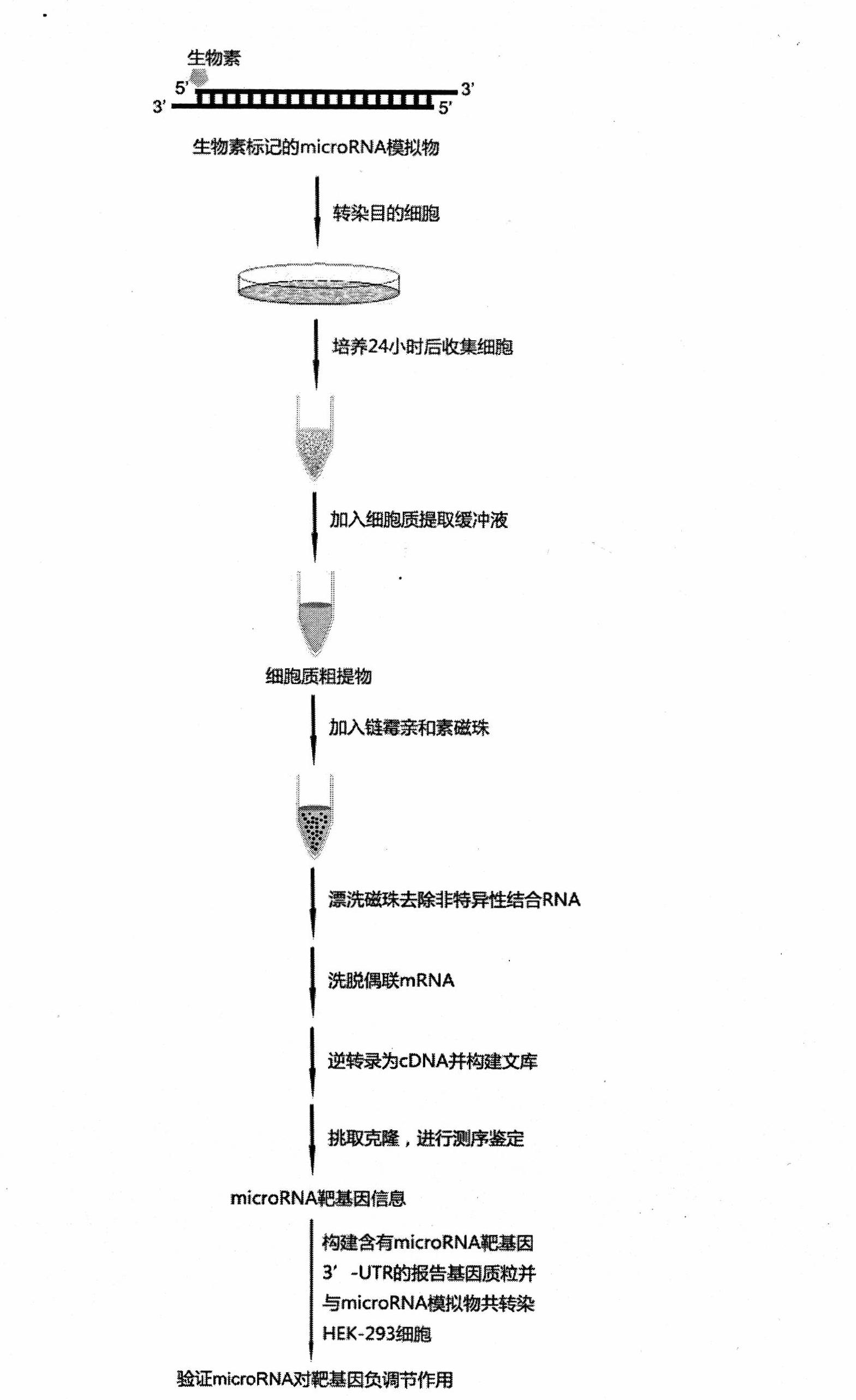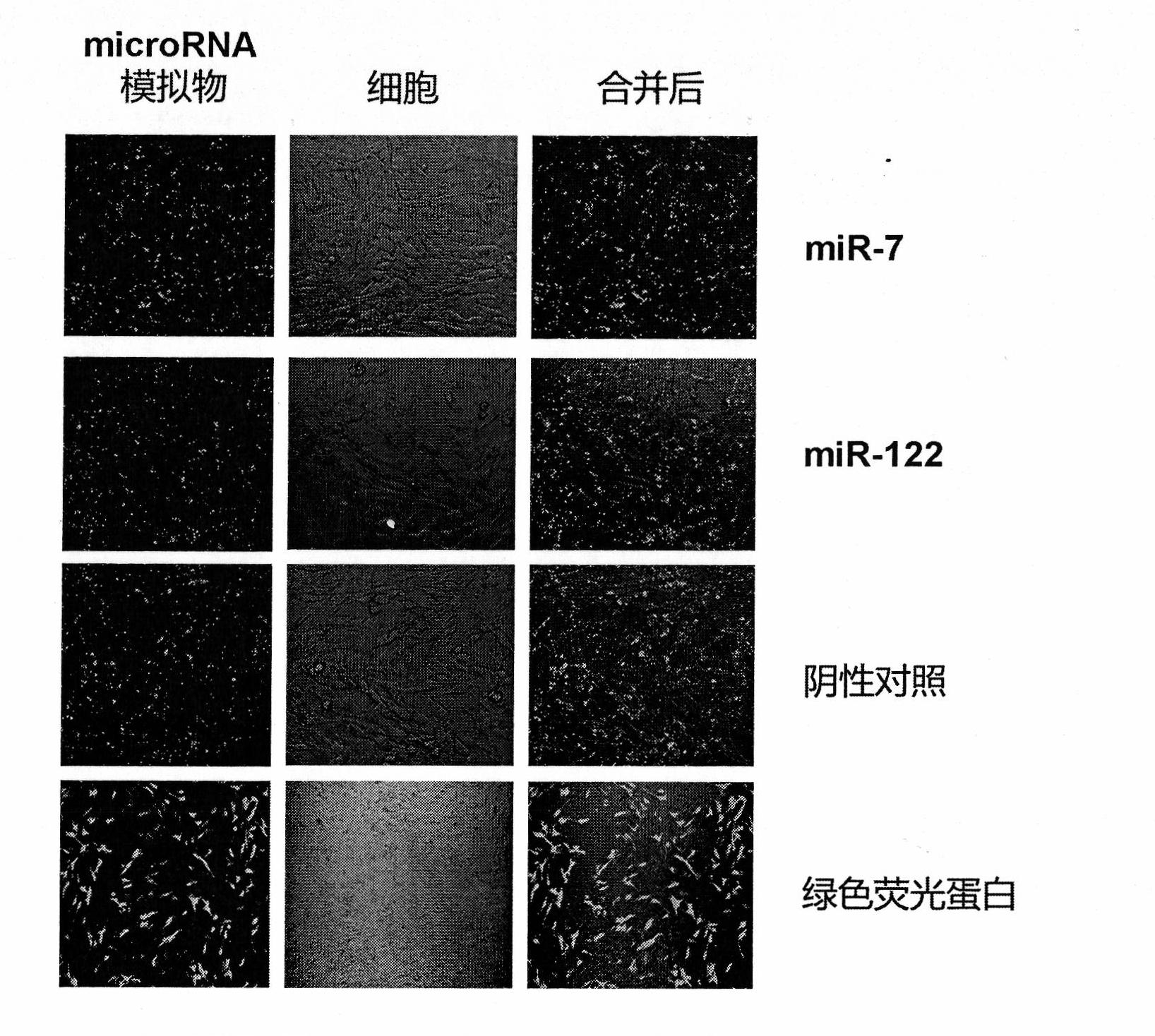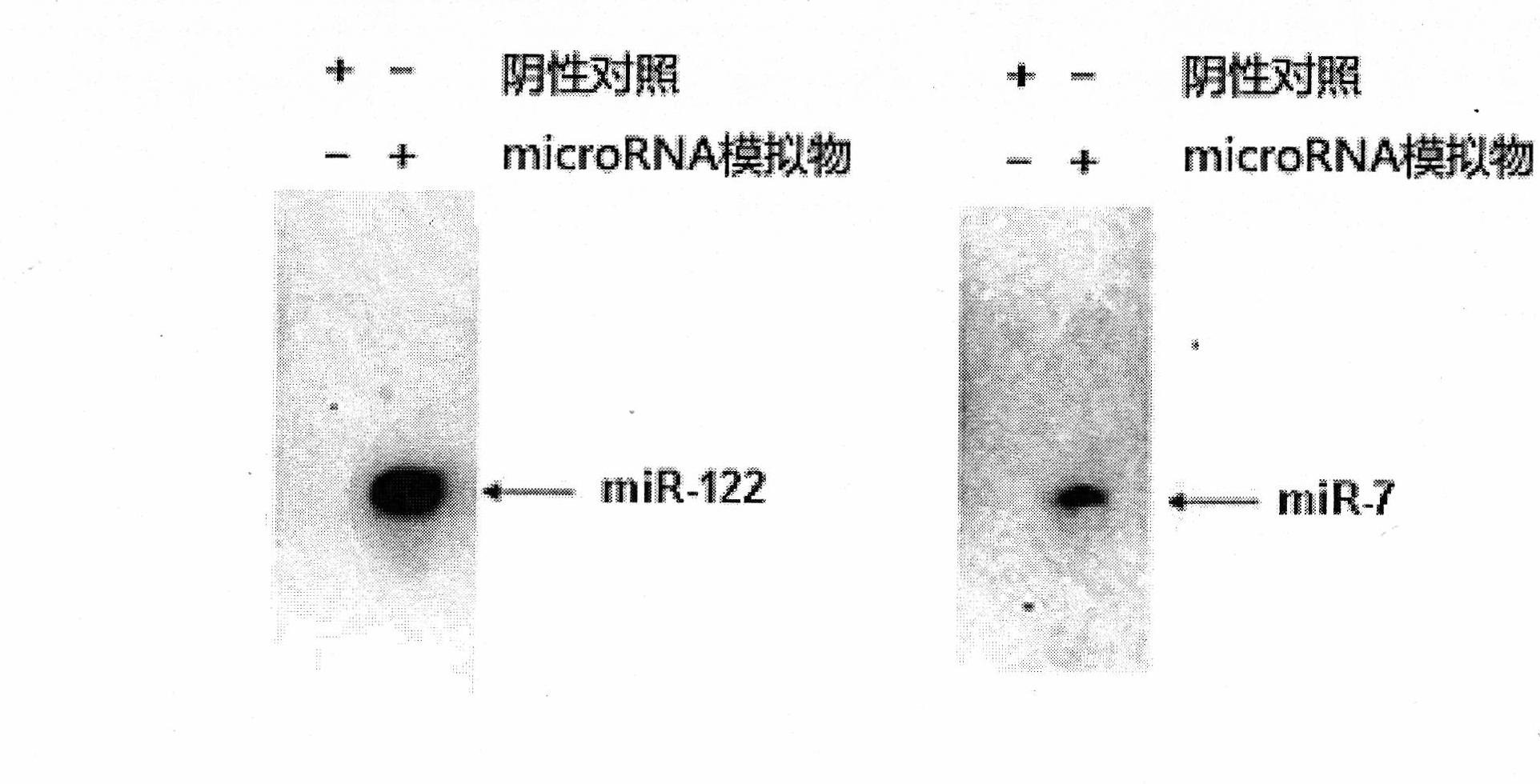Novel method for screening microRNA (Ribose Nucleic Acid) target genes at high flux
A target gene, high-throughput technology, applied in the field of high-throughput screening of microRNA target genes, can solve the problem of false positives of target genes, and achieve the effect of simple operation, low cost, and avoiding false positives
- Summary
- Abstract
- Description
- Claims
- Application Information
AI Technical Summary
Problems solved by technology
Method used
Image
Examples
Embodiment 1
[0037] Embodiment 1 experimental material and method
[0038] 1. Design and synthesis of microRNA mimics
[0039] The microRNA mimic is a structural double-stranded RNA artificially synthesized by simulating the hairpin-shaped precursor in the maturation process of endogenous microRNA. The antisense strand is reverse complementary to 19 nucleotides from the 5' end of the sense strand and has two bases each overhanging the 3' ends of the sense and antisense strands. The synthesis of microRNA mimics was done by Genepharma. In this experiment, two representative miRNAs were selected for subsequent experiments, and the oligonucleotide sequences involved in the experiment are as described in Table 1:
[0040] Table 1: Oligonucleotide sequences involved in the experiments
[0041] SEQ
ID
NO:
sequence name
sequence
1
miR-7 sequence
5'-UGGAAGACUAGUGAUUUUGUU
GU-3'
2
miR-7 mimetic
positive sequence
...
Embodiment 2
[0065] Embodiment 2 test result and main conclusion
[0066] Using the new technology of biotin-modified microRNA mimics for high-throughput screening of microRNA target genes, we randomly selected two microRNAs (miR-7 and miR-122) to design and synthesize microRNA double-stranded mimics. We first transfected target cells with FAM-modified microRNA mimics, and imaged by laser confocal ( figure 2 ) and Northern blot ( image 3) can determine that the microRNA mimic can be effectively and continuously expressed in the target cell, so as to ensure the subsequent steps of the technical system. Subsequently, streptavidin magnetic beads were used to capture the mRNA of the microRNA target gene in the crude cytoplasmic extract of the target cells after transfection, and the cDNA libraries of the target genes of miR-7 and miR-122 were established. The PCR results showed that the microRNA The fragments captured by the mimics were widely distributed in length, but each had different ...
PUM
 Login to View More
Login to View More Abstract
Description
Claims
Application Information
 Login to View More
Login to View More - R&D
- Intellectual Property
- Life Sciences
- Materials
- Tech Scout
- Unparalleled Data Quality
- Higher Quality Content
- 60% Fewer Hallucinations
Browse by: Latest US Patents, China's latest patents, Technical Efficacy Thesaurus, Application Domain, Technology Topic, Popular Technical Reports.
© 2025 PatSnap. All rights reserved.Legal|Privacy policy|Modern Slavery Act Transparency Statement|Sitemap|About US| Contact US: help@patsnap.com



